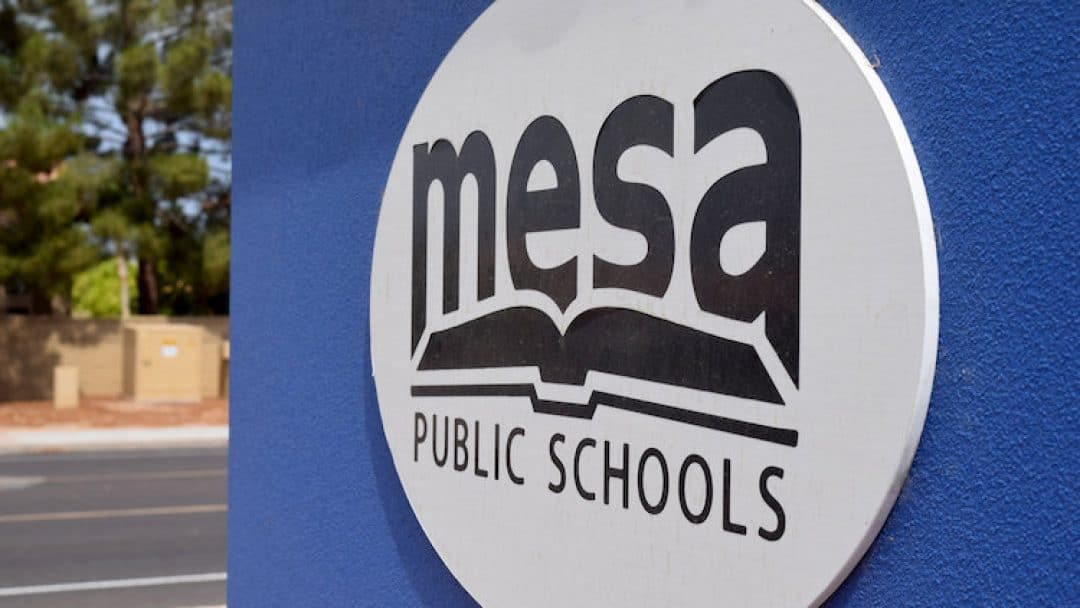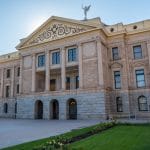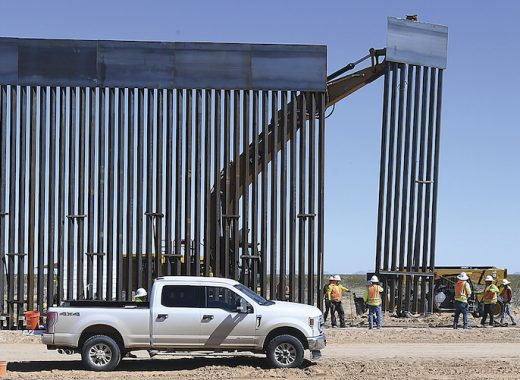Arizona’s largest school district plans to phase out its mask requirement after Gov. Doug Ducey abruptly ended the mask mandate for K-12 schools last week.
If comments at a Tuesday school board meeting are any indication, many parents and teachers are upset with the change and want mask requirements to remain.
Mesa Public Schools was among the school districts that changed its face covering rules in light of the executive order, while many other districts chose to keep masks in place as they wrap up the last few weeks of the school year.
Superintendent Andi Fourlis laid out the reasoning behind Mesa’s decision at Tuesday’s governing board meeting, during which board members and district leaders heard a number of public comments from teachers and community members, most of whom were upset with the decision.
Starting this week, masks are strongly recommended, but no longer required, when students are outdoors. Masks are still required in school buildings and on buses this week.
If the district does not show any high transmission indicators on Thursday’s Maricopa County schools COVID-19 dashboard, masks will become “strongly recommended, but not required” inside and on buses starting Monday.
The district says physical distancing to the extent possible, handwashing and hand sanitizing measures will remain, and that masks could become required again.
“We will continue to monitor case counts classroom-by-classroom, program-by-program and school-by-school. If we see an increase in cases, we will take immediate action to keep our community safe. That could include reinstating our mask requirement or quarantining classes, programs or schools,” Fourlis wrote in an April 22 letter to the community announcing the update.
The priority is to “finish the school year strong and safe,” Fourlis wrote, so that students can have in-person graduation and end-of-year celebrations.
“We will be hyper-vigilant and fast-acting as we use this data to determine if mask mandates or quarantines will be necessary,” she said Tuesday.
Some teachers said removing the mask requirement only jeopardizes end-of-year events.
Fourlis said throughout the spring, as vaccines increased and cases in schools decreased, employees and parents repeatedly asked when the district would lift its mask mandate. She said the answer was always they were not sure, because they were following orders from Ducey and the Health Department.
When that mandate was removed last Monday, Fourlis said she met with presidents of employee groups and collected feedback from district leaders, staff and the community. There was no clear answer of what to do, she said, but she is “proud” of the “measured and balanced approach” they chose.
“I know that this decision has consequences and I also know that not all of our community is pleased with this plan,” she said. “The phased approach proceeds with caution.”
Fourlis said families and staff should get in touch with school leaders if they need any accommodations.
About 20 people spoke during the public comment portion of Tuesday’s meeting, with all but two urging the district continue to require masks.
Josh Buckley told the board that teachers are concerned for their students and their classrooms given the change, and that some of his seniors might not come to class before graduation because of it.
“We are so close to the end of the school year that changing this up, I think, just puts a lot of students and some of the educators in those classrooms in a place where they have to choose feeling safe, making sure that they’re healthy, making sure that their other family members are healthy, with finishing the year ‘safe, strong and ready,'” he said, referencing the district’s reopening catchphrase.
Other parents and teachers said the change is inconsistent with what students and families expected when they returned to in-person school — that mask-wearing would be a primary and mandatory mitigation measure. Some said given variants of the virus and the fact that kids under 16 cannot yet be vaccinated, masks need to remain for the rest of the school year.
A music teacher said his plans for the first in-person concert in almost a year and a half are now less certain because some students aren’t comfortable attending. Another teacher said the typical year-end togetherness spirit may be replaced with strife and discord about masks. A third teacher said she always tells her students her job is to keep them safe and to teach them; now, she said she feels like she lied.
Mesa’s plan to phase out the mask requirement was announced three days after Ducey’s order. The day of his decision, Fourlis sent a note to the community saying the district was reviewing its strategies after the governor “abruptly canceled” the school mask mandate, and said current mask requirements would remain in place for the time being.
The Centers for Disease Control and Prevention and the Arizona Department of Health Services continue to recommend mask-wearing at schools — specifically, the “universal and correct use of masks.”
State Health Director Dr. Cara Christ said at a vaccine press event on Friday that while the school mask mandate has been lifted, the recommendation for masks at schools has not changed and districts should follow CDC guidelines.
“ADHS is consistent with the Centers for Disease Control and Prevention that it is an important prevention tool for schools. Everyone on a site at a school should wear a mask while they are there and then also use some of those other prevention — the frequent hand washing and hand sanitizing, the physical distancing. But we still feel masks are an important component to a COVID-19 mitigation strategy,” Christ said.
Mesa Public Schools parent Christie Black said she wished the district had left the requirement in place, as it puts parents like herself who want their kids to wear masks in a difficult situation.
“Either I pull them out for the last three weeks of school or I’m sending them to school with an increased risk. They haven’t been vaccinated, and there’s every chance that they could get COVID,” she said. “And while I’m not panicked because I think that the rates are low, of transmission, especially among children, but at the same time there’s still that chance.”
Black said her two elementary school-age kids are now used to wearing masks and their school days are fairly normal, just with a mask, so she didn’t see a downside to keeping the requirement in place for the last few weeks of school.
Although educators and school employees were prioritized early on to get the vaccine in Arizona, children under 16 are not yet eligible for any of the COVID-19 vaccines.
Kids are at lower risk for severe outcomes from COVID-19 infection, but bad outcomes do still occur. And kids, even when they show no symptoms, can transmit the virus to relatives or others who may be more vulnerable. About 16% of all cases since the start of the pandemic in Arizona have been in kids under 20 years old, and 29 people under 20 years old have died from COVID-19 in Arizona.
Schools have had outbreaks, according to the Maricopa County Public Health Department. As of last week, of the 298 total COVID-19 outbreaks in K-12 schools during the pandemic, 31 were still active. Students made up 72% of all school-related outbreak cases, per the county.








